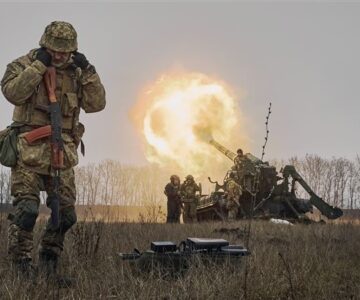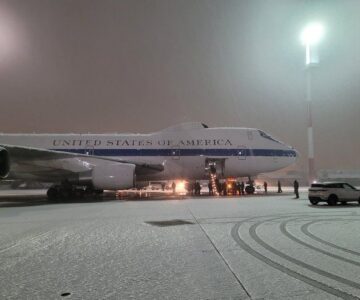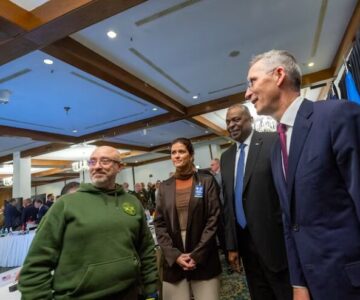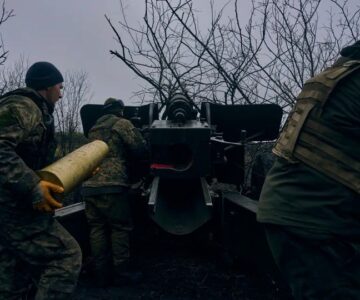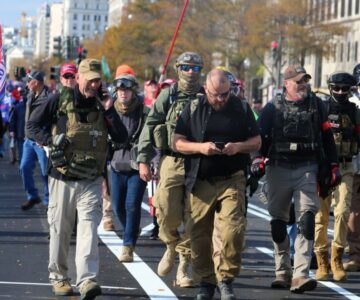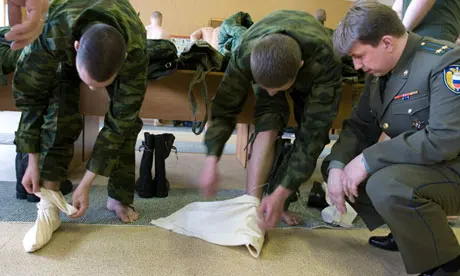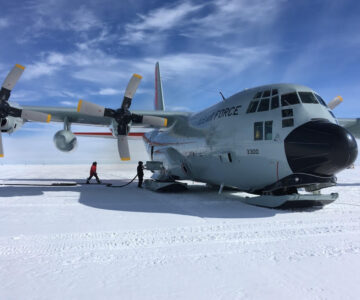Author
Ukraine’s Supporters Scramble To Get Weapons Into The Fight, To Repeat — Not Rewrite — History
By tom On Wednesday, February 15 th, 2023 · no Comments · In And more news stories ,Blog Postings ,News stories ,WritingBy Tom Squitieri Red Snow News BRUSSELS – In 1914, as troops invading France moved through this very region, those in charge of the defense of Paris scrambled to rush men and material to blunt that offensive. They had little time to react and threw everything they could find — including taxicabs — to getRead moreAs Two Big Meetings Open, Ukraine Looks To Change History As War Starts Round Two
By tom On Monday, February 13 th, 2023 · no Comments · In And more news stories ,News stories ,WritingBy Tom Squitieri Red Snow News BRUSSELS: In the days before World War One, Germany’s ambassador to Belgium, Clause von Below-Saleske, said he was happy to be in this capital city after stints in danger zones because “Nothing ever happens in Brussels.” The Ukrainians here to meet with friends and NATO nations fervently hope thatRead moreFrom The Halls of Montezuma To The Halls of Congress
By tom On Saturday, January 21 st, 2023 · no Comments · In And more news stories ,News stories ,WritingBy Tom Squitieri Red Snow News WASHINGTON -Three active duty Marines have been charged with participating in the riot at the U.S. Capitol, authorities said in newly filed court papers. All three Marines, who were arrested more than two years after the attack, work in jobs connected to the intelligence community. Micah Coomer, Joshua Abate,Read moreSorry Kyiv. They Came, They Jawed, And They Left Without Giving What Was Pleaded For
By tom On Monday, January 23 rd, 2023 · no Comments · In And more news stories ,News stories ,WritingBy Tom Squitieri Red Snow News WASHINGTON – The big meeting of the Ukraine Contact Group was held and for hours the participants heard Ukraine plea’s for tanks and other higher grade weapons, such as log-ranger missed and ground-launched Small Diameter Bombs. Defense Sectary Austin urged all to dig deeper. But the only thing thatRead moreAll Over The Board With Tanks
By tom On Tuesday, January 24 th, 2023 · no Comments · In And more news stories ,News stories ,WritingBy Tom Squitieri Red Snow News WASHINGTON – Poland’s prime minister vowed to ask Germany for permission to send German-made tanks to the front lines in Ukraine, but also insisted that, whether Berlin approved or not, he would put together a coalition that would. German officials were all over the board, which some saying aRead moreFrom U.S. Factories With Love? Russian-style Ammo May Be Made in U.S.
By tom On Thursday, December 22 nd, 2022 · no Comments · In And more news stories ,News stories ,WritingBy Tom Squitieri Red Snow News WASHINGTON — They say war makes strange bedfellows. It may also make strange weapons productions. Such as U.S. companies making, essentially, Russian military ammo. Included in the $1.85 billion military aid package formerly announced Wednesday by the Pentagon, is $850 million in assistance via the Ukraine Security Assistance Initiative,Read more“SLAVA UKANINl” — As Zelensky Brings The Stature And Face of Freedom To Washington
By tom On Wednesday, December 21 st, 2022 · no Comments · In And more news stories ,News stories ,WritingBy Tom Squitieri Red Snow News WASHINGTON –– He entered Washington less than 24 hours after appearing with his front-line troops in a city under war zone fire. He presented Congress with a Ukrainian battle flag, given to him on Tuesday in that frontline city of Bakhmut in eastern Ukraine and signed by the troops.Read morePentagon Perturbed At Parsing
By tom On Wednesday, November 23 rd, 2022 · no Comments · In And more news stories ,Blog Postings ,News storiesBy Tom Squitieri Red Snow News WASHINGTON — In a Defense Department world where a “readout” — the name of the staid press release that portends to describe in detail a meeting or event — can be written weeks in advance, the idea of journalists being accused by Pentagon officials of trying to parse wordsRead moreWeapons Crunch Panic; Pentagon Peevish When Asked
By tom On Wednesday, November 23 rd, 2022 · no Comments · In And more news stories ,Blog Postings ,News stories ,WritingBy Tom Squitieri Red Snow News WASHINGTON — Top European defense officials — feeling the heat of being closer to the front line of the 21st century European war — have moved beyond fretting to deep concern about diminishing weapons stockpiles in their militaries. While the Russian bear has been smacked around for the pastRead moreExtreme Avoidance: Austin Said Stamping Out Extremism Was A Priority. You Wouldn’t Know It
By tom On Thursday, November 10 th, 2022 · no Comments · In And more news stories ,News stories ,WritingBy Tom Squitieri Red Snow News WASHINGTON — A list of more than 100 active members of the military who are connected to the extremist group the Oath Keepers has been largely ignored by the military branches, despite a proclaimed priority emphasis by Defense Secretary Lloyd Austin to deal with extremism in the ranks. TheRead moreFor Want Of A Foot Warmer, The Winter War In The Donbas May Be Determined
By tom On Monday, October 31 st, 2022 · no Comments · In And more news stories ,News stories ,WritingBy Tom Squitieri Red Snow News WASHINGTON — For want of a foot warmer, the winter war in the Donbas may be determined. As the clock and nature become allies to determine the next four to six weeks of the war in Ukraine, supporters of Ukraine are rushing military supplies to Kyiv while quietly brainstormingRead moreAppendix can stay for National Guard going to Antarctica remote post mission
By tom On Thursday, October 27 th, 2022 · no Comments · In And more news stories ,News stories ,WritingBy Tom Squitieri Red Snow News WASHINGTON –– National Guard air personnel from New York states will deploy to Antarctica over the next four months to support climate research and other scientific activities during the Antarctic summer, in the latest incarnation of Operation Deep Freeze. And they all will go with their appendix. The 420Read more
By Tom Squitieri
Red Snow News
WASHINGTON –– National Guard air personnel from New York states will deploy to Antarctica over the next four months to support climate research and other scientific activities during the Antarctic summer, in the latest incarnation of Operation Deep Freeze.
And they all will go with their appendix.
The 420 or so Guard personnel do not have to have their appendix removed, which is a usual requirement for long-term missions to Antarctica, because they will be at three very remote locations during what are summer months — meaning they should not be snowed in, officials concluded.
“Our Airmen ARE NOT required to have their appendix removed to deploy to McMurdo Station for our annual support for Operation Deep Freeze,” Eric Durr, Director of Public Affairs, New York State Division of Military and Naval Affairs, said in an email after the Pentagon expressed uncertainty.
Operation Deep Freeze is the code name for a series of U.S. military missions to Antarctica, beginning in 1955–56.
Because of the remoteness of research sites in Antarctica — no one refers to them as bases since military installations are forbidden in Antarctica by treaty — those who work there beyond a short visit are usually required to have wisdom teeth and appendix removed due to the lack of surgical medical facilities.
That is the same rule that applies to astronauts.
The original requirements were established by Navy Seabees, who were the initial U.S. presence in Antarctica post-World War II. The Navy gave up control in 1998, passing the program to the National Science Foundation. Those traveling during Antarctica’s austral summer (between October and February) are analyzed based on their personal health before given the green light.
The Guard personnel are going to “support climate research and other scientific activities during the Antarctic summer” at three science camps – South Pole Station, Western Antarctic ice sheet divide camp and Siple Dome camp— as well as providing airlift between New Zealand and Antarctica, the Pentagon said.
“These activities not only increased the U.S. military’s readiness by operating in extreme conditions, but also enable researchers to safely conduct their important scientific missions, since these very remote locations require the capability of heavy airlift aircraft to deliver needed fuel equipment and supplies,” Brig Gen. Patrick Ryder, the Pentagon spokesperson, told reporters.
Ryder also said that there is not expected to be any interoperability exercises with allies by the Guard personnel. “For this particular operation, to my knowledge, this is a U.S. National Science Foundation exercise,” Ryder said. “But I do know that the U.S. works very closely, for example, with Australia and New Zealand and a variety of exercises throughout the region.”
Meanwhile, for the first time in three years members of the Commission for the Conservation of Antarctic Marine Living Resource are meeting in person with an ease of COVID restrictions.
It comes as New Zealand’s Prime Minister Jacinda Ardern makes a rare visit by a world leader to Antarctica, to see firsthand the scientific research taking place and to mark the 65th anniversary of New Zealand’s Scott Base.
Conservationists say new marine protected areas and rules to prevent overfishing are desperately needed, but that Russia could use its veto-like powers to once again block progress. Two of the Commission members — Russia and Ukraine — are at war and relations between China and many Western nations have deteriorated , challenging consensus.
The U.S. is paying more attention to the region under President Biden, and this year has sent a relatively high-level delegation led by Monica Medina, an assistant secretary in the State Department.

